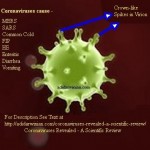Perl as Programming Language of Choice for Biologists!!
Posted on 28 October 2013
Why Biologists (Bioinformaticians or Bioinformaticists, if the scientific jargon is to be preferred) Prefer Perl?
I am a bioinformaticist, and love Perl over all other computer languages when it comes to programming in biology. This is not only my case, majority of the biologists prefer Perl for their bioinformatics’ tasks. Perl can be given the status of being the mainstay programming language in the field of Bioinformatics (sometimes known as Computational Biology). There must be some reasons why this is the case; actually there are some very strong points that favor the use of Perl in biology over the other lot of available programming languages. But, to be honest, at times, other computer programming languages can be of more benefit than Perl, at least for a specific task. If you are not acquainted with Perl, click here for, what the heck is Perl? In this article, I will explain why it is justified to consider Perl as programming language of choice for biologists, and for the sake of information, I would like to tell that even the non-biologists too prefer it much!
Low Learning Curve – Tyros Don’t Have to Fear!
If you are a new programmer or a conventional biologist (by this I mean, you don’t have the computer programming knowledge), then you will definitely look for a programming language that has a low learning curve, that is, it is easy to get started with it and learn to write useful programs.
Perl Makes Everyday Programming Jobs Easy – Really Easy!
There are many programming languages to choose from in order to write a program, for example, C, C++, Java, etc; but when it comes to choosing a particular language, a computer programmer is always in the search for a language that allows him or her to write programs easily. With Perl, tasks like designing and developing a program, compilation, interpretation, and execution of a program become easy, fast, and efficient. You can just execute or run your program like a batch file or shell script. Perl is a boon for bioinformaticists or bioinformaticians, as it offers features that simplify their everyday tasks. Protein Data Bank (PDB), GenBank (Genetic Sequence Data Bank), and other such biological databases make use of ASCII text files or flat files for storing the biological information. Perl can readily deal with information or data in ASCII (American Standard Code for Information Interchange) text file or flat file format. With Perl, a programmer can process or manipulate long biological sequences such as DNA (Deoxyribonucleic acid) and proteins with ease. A program written in Perl can be easily used to control other programs. A biology research lab usually wants its results to be posted on its dynamic website; Perl makes it simple to do so.
Write Less; Do More – The Ease of Rapid Prototyping!
Perl allows you to finish programs in a few lines of code as compared to the chunk of code required in other programming languages such as C and Java. The fast speed of writing programs (Rapid Prototyping), offered by Perl, is of key benefit to the biology research labs which have to frequently modify programs or frequently require new programs.
High Portability and Free of Cost Availability – A Part of Open Source Movement!
Perl is highly portable language as the programs written in Perl can easily run on different types of operating systems such as Unix, Linux, Windows, Macintosh, etc. Perl is a part of the open source movement, and hence, is available free of cost.
Maintaining and Extending Programs – Sophisticated Programmers are Cordially Invited!
After the completion of the tasks of writing and testing a program, the task of program maintenance presents a great challenge to the programmer. A successful program has to be kept always in a working state, and it should be easy to modify or extend it, for example, adding new features to it or modifying it to handle more input types. Finding and fixing of bugs (Debugging) is an essential step in program maintenance. Perl not only allows a novice bioinformaticist or bioinformatician to rapidly write and execute a program, but also offers equal ease in debugging and extending the functionality of the program. So, if during the research work in a bioinformatics lab, a newer program is required urgently, it is quite easy to extend the functionality of an in-hand successful program written in Perl. Perl is a general-purpose language with a rich heritage, so it never disappoints a serious bioinformaticist to design and develop complex programs in order to solve the big biological enigmas. If Charles Darwin had Bioinformatics as a tool in his times of glory, what mammoth discoveries he would have made are beyond the limits of human perception!!
Thus, it is quite clear now why we can consider Perl as Programming Language of Choice for Biologists!!








Perl is really good for bioinformatics – this is a fact.